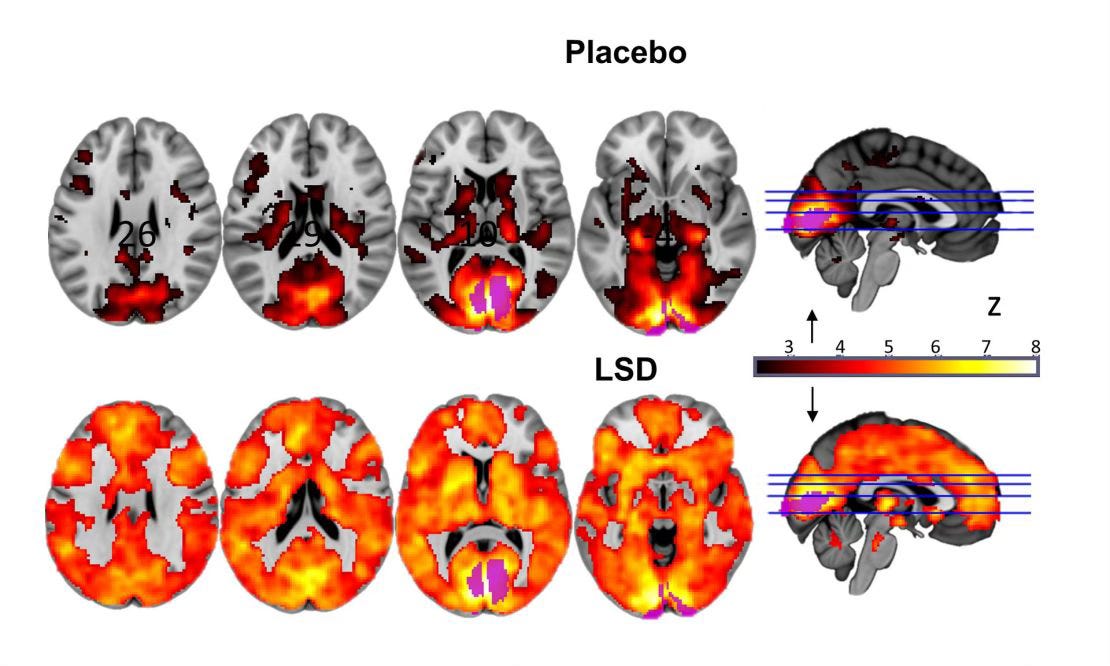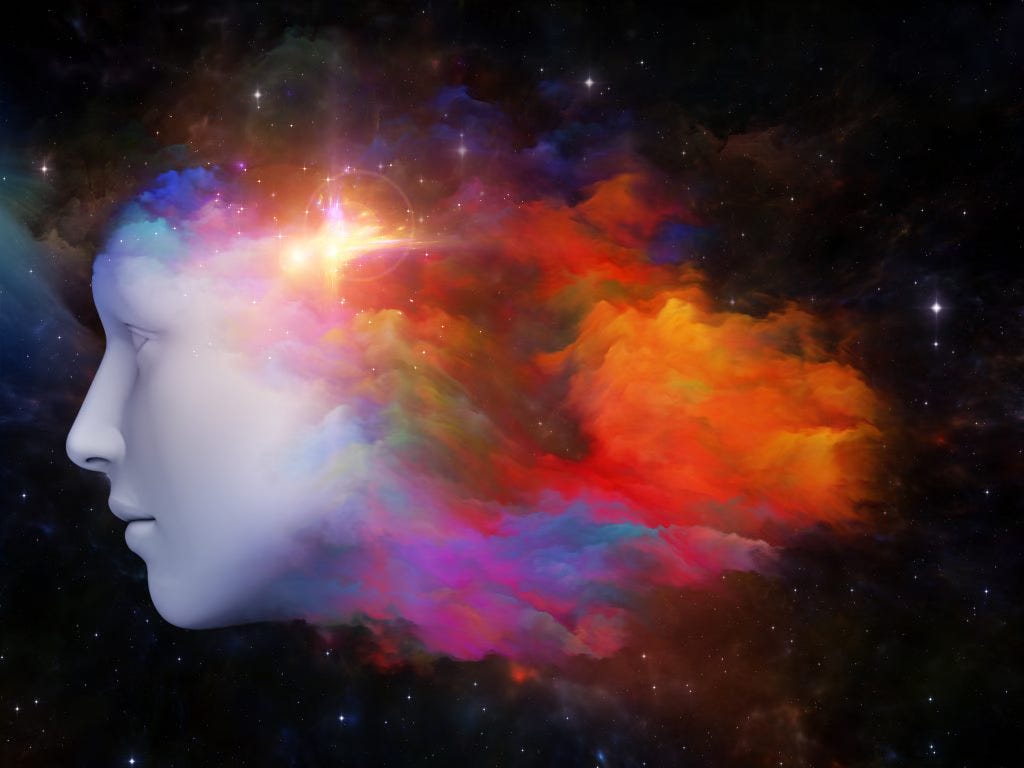As mentioned in our last newsletter, we will begin the new year with a series on other common hallucinogens that are not direct derivatives of plants or fungi. This week we will look at LSD. As we researched this week’s topic, we found some very interesting theories pertaining to the history of the drug’s origin source and how it has been used in military experiments. We put together a summary which includes some of the history, government, recreational, and medical uses, as well as how it impacts the body.
Roman doctors described a disease called the sacred fire (sacer ignis) which by the Middle Ages came to be known as St. Anthony’s Fire: “an ulcerous Eruption, reddish, or mix’d of pale and red: and painful to the Patient,” as one 1714 text put it. This disease was ergotism: poisoning produced by exposure to the compounds found in a fungus that grows on wheat.
LSD stands for Lysergic Acid Diethylamide (Claviceps purpurea). It belongs to a group of drugs known as psychedelics. Lysergic acid is a naturally occurring substance and can also be synthesized. It occurs naturally in ergot and is a chemical produced by a specific type of fungus that grows on grains like rye and wheat. When infected, some of the kernels of the grain turn black as the fungus takes them over. If this grain is then eaten, bizarre behavior and violent physical reactions can result. Symptoms of ergot poisoning include vomiting, delusions, hallucinations, crawling sensations on the skin, and severe muscle spasms.
Some researchers believe that fungus on rye grain may have been responsible for the Salem witch trials and subsequent executions. In warm, wet months, the fungus is more widespread. The summer of 1691 the primary grain used in Salem was rye. At the end of the rainy season, the “bewitchments” that led to the accusations and executions of several witches abruptly stopped, which could have been due to the dryer weather killing off the fungi. In 1762, there were several documented deaths that were attributed to ergot poisoning from contaminated grain. A farm laborer’s wife and six children died after suffering terrible symptoms such as blackened and rotting limbs. In 1951 in Pont-Saint-Esprit, France, there was another such episode in which either ergot or LSD was implicated. Dozens of people suffered violent delusions requiring restraints and hospitalization. Five people died, and some believe that the village may have suffered from a public test of LSD that was produced in Sandoz Chemical, a few hundred kilometers away.
In 1938, Swiss chemist Albert Hoffman synthesized the chemical lysergic acid diethylamide while working for Sandoz Chemical. He was looking for a stimulant for blood circulation. He came up with LSD-25 which turned out not to be the circulatory stimulant he wanted and so he set the formula aside for the next five years. In 1943, he accidentally exposed himself to this drug and noted “an uninterrupted stream of fantastic pictures, extraordinary shapes with intense, kaleidoscope-like play of colors.” Three days later, he intentionally took the drug again. His dosage was rather large and the reaction was frightening. He went to his home by bicycle. (Among advocates of LSD, April 18, 1943, is known as “Bicycle Day.”) Sandoz Chemical began to experiment on volunteers to see if this drug had a use in psychiatric treatment. The pharmaceutical company Eli Lilly developed a way to synthesize it and a method of growing ergot in tanks was established. These advances allowed lysergic acid to be produced commercially.
With the discovery of some of its potential mood-enhancing benefits, interest surged in LSD’s use for a range of health purposes, particularly for use in psychotherapy and for treating schizophrenia. In 1947, Sandoz began selling LSD under the name Delsid, essentially marketing it as a cure-all for conditions ranging from alcoholism to schizophrenia. Extensive research on LSD began and continued for the next few decades. One of the most prominent LSD researchers in the 1950s was Dr. Humphry Osmond, who believed that LSD could help cure alcoholism and mental illnesses such as schizophrenia. Between 1954 and 1960, Osmond found that 40% to 45% of the alcoholics who were treated did not return to drinking after a year. In the 1950s, psychiatrist Ronald Sandison used LSD as an adjunctive treatment to psychotherapy on patients suffering from severe mental illness. He found significant improvements in symptoms among most of these patients. Around the same time, a number of studies found that LSD could also have benefits for reducing anxiety, depression, and pain in people with cancer.
During the 1950s and ’60s, the CIA also began testing LSD and other drugs on civilians, prisoners, and the military. This covert and unethical operation, known as MK-ULTRA, was carried out because the U.S. believed that communist Russia, North Korea, and China were using the drug to brainwash captured Americans during the Cold War. They didn’t want to be left behind in researching the drug’s potential for mind-control. During MK-ULTRA, the CIA conducted hundreds of uncontrolled tests on unsuspecting people in a variety of ways, sometimes with undercover narcotics agents secretly slipping LSD into drinks at bars and following people afterwards to see how they responded. The CIA also used LSD during interrogations, but the results of these experiments were often unreliable. The operation ceased in 1964 because LSD was determined to be too dangerous to use.
People use LSD in a variety of ways. The liquid form is placed onto small paper squares known as “blotters,” which people can place on their tongues and/or swallow. It is sometimes found in pill form or put into sugar cubes or gelatin squares, which can all then also be taken orally. More rarely, LSD may be encountered as a crystalline powder, which may be crushed and inhaled or dissolved in solution and injected.1 Users tend to experience the onset of effects within 30 to 90 minutes of use. The short-term effects of LSD can include seeing, feeling, or hearing things that aren’t there; mixed senses, such as “seeing” sounds or “hearing” colors; intensified sensory perception; increased body temperature, blood pressure, and heart rate; and changes in the way the person experiences time. A “bad trip” can include symptoms such as panic, delusions, increased anxiety, and paranoia. People that experience a bad trip may have rapid mood swings or fear that they are losing their identity.
LSD is not considered an addictive drug--that is, it does not produce compulsive drug-seeking behavior as cocaine, heroin, and methamphetamine do. However, LSD users may develop tolerance to the drug, meaning that they must consume progressively larger doses of the drug in order to continue to experience the hallucinogenic effects that they seek.
LSD seems to affect the body and brain in many different ways, including:
● Serotonin: Serotonin is a chemical in your body that plays a role in mood and conditions like depression, anxiety, and obesity. LSD is a “serotonergic psychedelic” that interacts with serotonin receptors in your body.
● Hormones: Unlike other psychedelics, LSD also affects a neurotransmitter and hormone called dopamine. Dopamine regulates the way you process pleasure and reward. It is linked to conditions like depression and addiction. LSD also increases hormones like oxytocin and cortisol, which are important regulators of stress and mood.
● Communication in the brain: Brain imaging shows that LSD may make it easier for different areas of the brain to communicate with each other.
● Neuroplasticity: LSD and other psychedelics may encourage neuroplasticity. Neuroplasticity is your brain’s ability to grow and change. It may be one of the ways people adapt to new situations, stress, injuries, and other environmental changes.
Congress criminalized possession of LSD in 1970 when it passed the Controlled Substances Act, which categorized it as a substance with “no currently accepted medical use” and a “high potential for abuse.”
LSD has a long history of use in psychotherapy and it is illegal and not an available treatment outside of clinical research. Because LSD, is man-made, we are not proponents of its use. We believe that mother nature has the best recipes for assisting humans with their earthly experiences and man’s attempts to replicate or reproduce her formulas are dangerous. Primarily because they are NOT designed to work with our bodies chemistry.
Watch for us next week as we explore the hallucinogen known as ketamine.
Listening to
In the works
App - Our app will be launching this coming month with communities and ways to be more connected with us and people like you! We will be offering more classes and there is so much coming with this launch
Podcast - We have podcasts coming at you always! Listen on all major platforms- Listen Here
Coaching Services at Zenchronicity
There are 3 ways to work with us!
1. Apply for 1:1 Coaching
3-months of constant coaching where we use plant medicine and tools to take you from your comfort zone to a purpose-driven life without fear, anxiety, depression, addiction, and things that stop you from living your authentic life to its fullest! This is POWERFUL and you have our full attention and intention working with you side by side. APPLY HERE
2. Take our Microdosing course
For only $50 you can take a journey through "Microdosing 101" a beginner-level course designed to introduce participants to the concept of microdosing, primarily focusing on microdosing with psychedelics. The course aims to provide a comprehensive overview of what microdosing is, how it's done, potential benefits, risks, and considerations. The course is typically delivered through workshops, lectures, online platforms, or self-paced modules.
3. Ayahuasca Retreats
Our retreats offer the opportunity to escape the hustle and bustle of everyday life, allowing you to focus on healing and personal growth. Our retreats are designed to help you find a greater sense of clarity, connection, and purpose. During your stay, you will be encouraged to engage in mindfulness practices, yoga, and meditation, while receiving personalized coaching and support. Join us for an unforgettable journey of transformation and self-discovery. Get our next dates
Much Love and Appreciation to you all!








